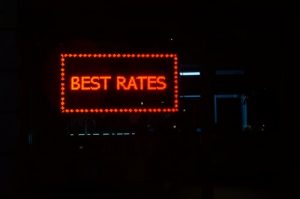Years after falling out of favor in the midst of the subprime mortgage crisis, variable-rate mortgages (ARMs) are becoming more and more common.
According to a December 2019 report from Ellie Mae, a mortgage software company, the percentage of home purchases using variable-rate mortgages reached 9.2%. Not only was it the highest level in 2019, but it was also a record since Ellie Mae started tracking this data in 2011.
While many personal finance and industry experts are concerned about this resurgence and warning consumers to continue to avoid ARMs like the plague, this is not the general feeling.ARMs have their supporters, even though they were involved in the collapse of the real estate market that sparked the Great Recession. Here are the pros and cons of using an ARM to buy a home.
What are MRAs and why do they come back?
For foreigners, ARMs are mortgages with adjustable interest rates. They offer lower starting interest rates to borrowers for a fixed period of time, usually three, five, or seven years. After that, the rate varies depending on the market. For example, an ARM 5/1 has a fixed interest rate for the first five years and is then reset to a new interest rate each year depending on market conditions.
ARMs are becoming more popular, with interest rates on fixed-rate mortgages at 15 and 30 years increasing in 2018. The average interest rate on fixed-rate mortgages at 30 years fell to 4, 14%, according to Freddie Mac, after peaking at 4.94% in November. However, the average rates in the middle of 3% have probably been gone for a long time and most experts expect rates to rise in the coming years.
As the economy improves, loans generally become more expensive. However, ARM mortgage rates often start about 0.5% less than fixed-rate loans.
In this environment, borrowers looking for the lowest mortgage rates are increasingly opting for ARMs.I’m not surprised that ARMs are coming back. As home prices continue to rise, many potential homeowners are simply being laid off,” said James Stefurak, CFA and founder of Monarch Financial Research in Florida.
The difference between the present and the time before the great recession
For those who are now considering an adjustable-rate mortgage and believe that the lower rate will help them qualify for more homes, think again, says Mike Ferraro, chief of mortgage operations at the Bank of England.
One of the most common reasons people did ARM before 2008 was to qualify for more than one house. At this point, lenders have rated borrowers with the lowest starting interest rates without taking into account future rate hikes, ”said Ferraro. As a result, many consumers also have taken out variable-rate mortgages that would have been much less valued by today’s standards. Today, however, mortgage lenders assess ARM borrowers on the basis of a higher interest calculation instead of the rate originally offered. When ARMs came out of the recession, they had a bad reputation for a reason, but the problem was more the subscription than the product itself,” said McGrath. So If you can’t pay a loan, you have a default, it’s that simple, and during the housing bubble, borrowers could lie about their income and the banks didn’t care.
The disadvantages of variable-rate mortgages
Failure to control interest rate fluctuations can be a difficult experience that can sometimes lead to disaster for the homeowner, as shown by the housing crisis mentioned above.
Borrowers who choose this type of mortgage should be prepared for a possible roller coaster ride and be comfortable. If fluctuations in the ARM occur, this can lead to considerably higher mortgage payments almost overnight, which can be especially problematic for low-income borrowers. If interest rates rise quickly, the borrower could spend hundreds of dollars on additional interest payments in a year,” said Matt Seu, director of the final service provider.



